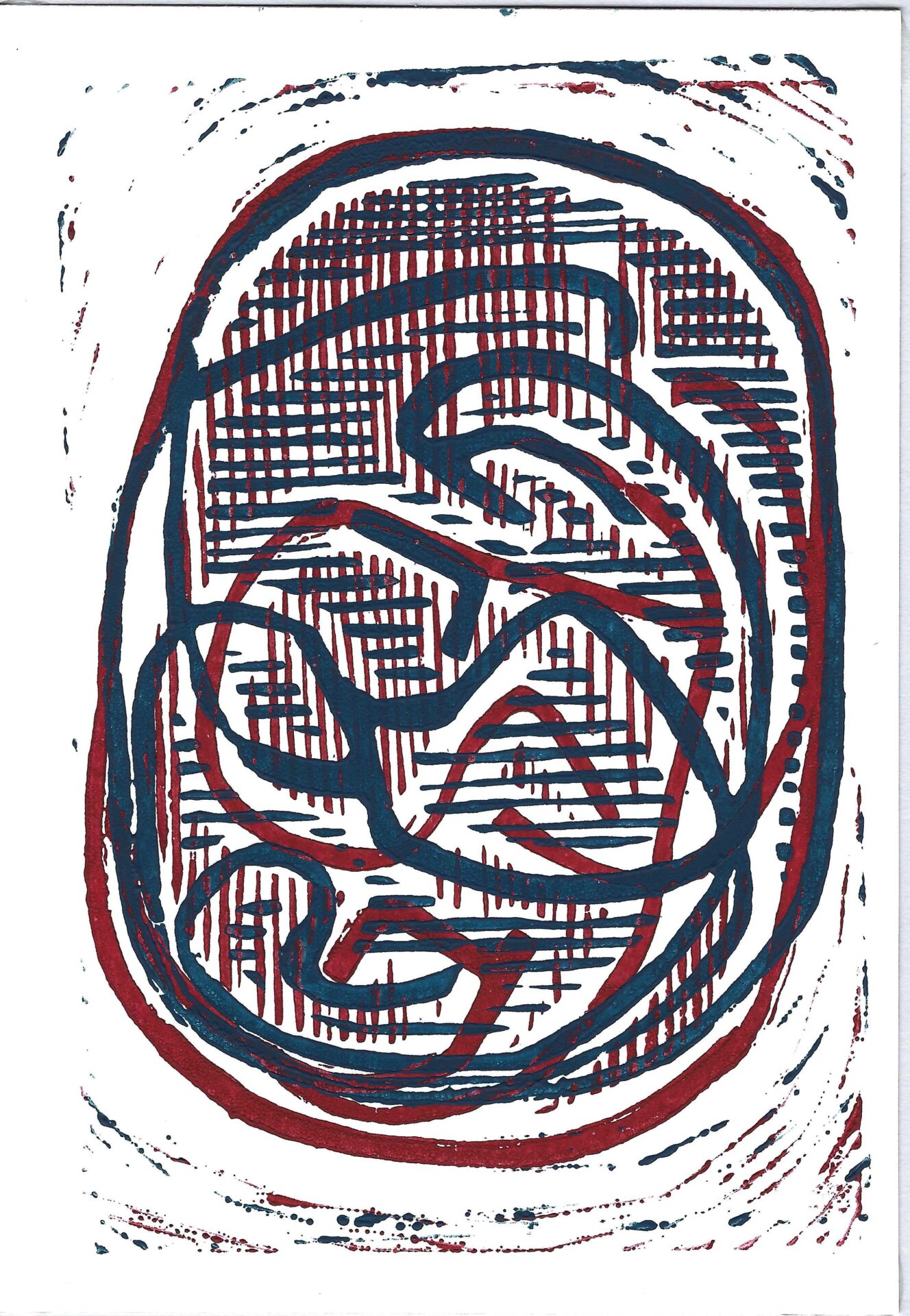a Zoom-enabled meditation circle
During this time of the COVID-19 pandemic “sheltering at home” Central Synagogue in Manhattan has been maintaining a Zoom-mediated daily meditation practice.
A daily call-in meditation practice and a little Torah to help relieve stress and center the mind.
The practice began on March 23 and has continued every weekday (except for holidays). Each session begins with a brief d’var Torah and uses a “mantra” associated with the d’var Torah’s thought. An archive of the recorded sessions appears on Central’s Web site.
Because this was not an essay, but a verbal guided meditation, here’s a link to the recording at SoundCloud.
As she was due for a well-deserved vacation, R. Buchdahl invited a few members of the circle to substitute for her. My session occurred Thursday, May 21, 2020 on the 42nd day of the counting of the Omer. My remarks follow. The text is expanded to include linked ideas and images (that couldn’t be expressed through the Zoom call).
As people arrived on the call, a tiny fragment of Morton Feldman’s String Quartet 2 played in the background. (I know that is extremely unfair to Feldman.)
Good morning בוקר טוב.
I, Mark Hurvitz, am honored and humbled to be our guide this morning. Please find a comfortable seated or reclining position as we begin our exploration.
We focus a good deal on our breath in this expanding circle. I invite you to join me as we travel through texts, times and territories. Today I want to examine our breath using four Hebrew letters as expressed in three classic texts.
The letters are very soft, nearly silent consonants. Their sounds are: “ ’ ”, “ h’ ”, “ wuh ”, and “ yuh ”. The letters names are: י ו ה א .
These are our breathing building blocks.
While it’s the first letter of the Hebrew alphabet, we’ll save the א for last.
Feel free to close your eyes.
the first text
Consider the Shema. Most of us are familiar with the Shema. I’ll offer my own translation to work from:
Pay attention Israel, “[ Yuh H’ Wuh H’ ]” is our God, “[ Yuh H’ Wuh H’ ]” is One.
You’ll note that I breathed the four-letter name we use for God. I did so, in order for us to examine that word/name a bit more closely. As you could hear, Its four letters are barely consonants; they are more like breathing sounds.
I was taught long ago (and produced a simple one-page PDF illustrating) that we can:
Visualize the initial yod י. It is tiny, a speck, as though it represents our bodies, our lungs, at the moment of complete exhalation.
Then, the first heh ה opens and can represent our bodies and lungs during an inhalation.
This is followed by a vav ו. It looks like a lengthened, expanded yod י and can represent our bodies at the moment they are filled with breath.
And then, again, a heh ה represents an exhalation.
This process repeats and continues.
All living things breathe.
the second text
The very last line of the book of Psalms: Psalm 150:6:
כֹּל הַנְּשָׁמָה, תְּהַלֵּל יָהּ הַלְלוּ־יָהּ
…translates partially as:
Every נְּשָׁמָה praises God; Hallelujah!
or:
Every spirit praises God; All praise God!
We know that the word spirit נְּשָׁמָה has the same root as the word for breath נְשִׁימָה. You can hear the similarity.
And, so, with the appropriate awareness we can reread the Psalm as saying:
Every breathing thing continuously speaks (“meditates on/praises”) God’s name. Praise God!
expanding our awareness
Each of our cells lives, breathes, dies and is replaced by newly generated cells.
Our cells each come to their end. I am finite; we are finite. At some time I and each of us will stop breathing. Indeed, as my friend Alan reminds me one of the primary “terror[s] [during this time] of COVID-19 is that it robs us of our breathing”. We each come to our end, yet Breath itself continues. We know that an Infinity of Breath exists and that we can barely grasp an awareness of it and certainly not its entirety (because we are only finite).
Now, join with me as we travel from the tiniest to the largest.
Remember the phrase: “The Whole Is Greater Than The Sum Of Its Parts”?
We each consist of atoms (which are themselves combinations of electrons, neutrons, protons). All these combine into various molecules, and those in turn join together and create cells. Some of those cells form my big toe and other organs that ultimately add up to me, or you. We are all “matter”. And, nonetheless, we “matter”. And, one of the ways in which we “matter” is that you and I are each greater than the sum of our atoms, our parts.
Earth, our biosphere, our living globe is also built up out of all these same atoms, molecules, cells, and organs… and us. We could say the Earth itself is greater than the sum of it parts as well, it has a certain “Earthness”.
You and I, each of us, are conscious. We are even conscious of our selves. So, we could say that “self-consciousness” is an aspect of Earthness.
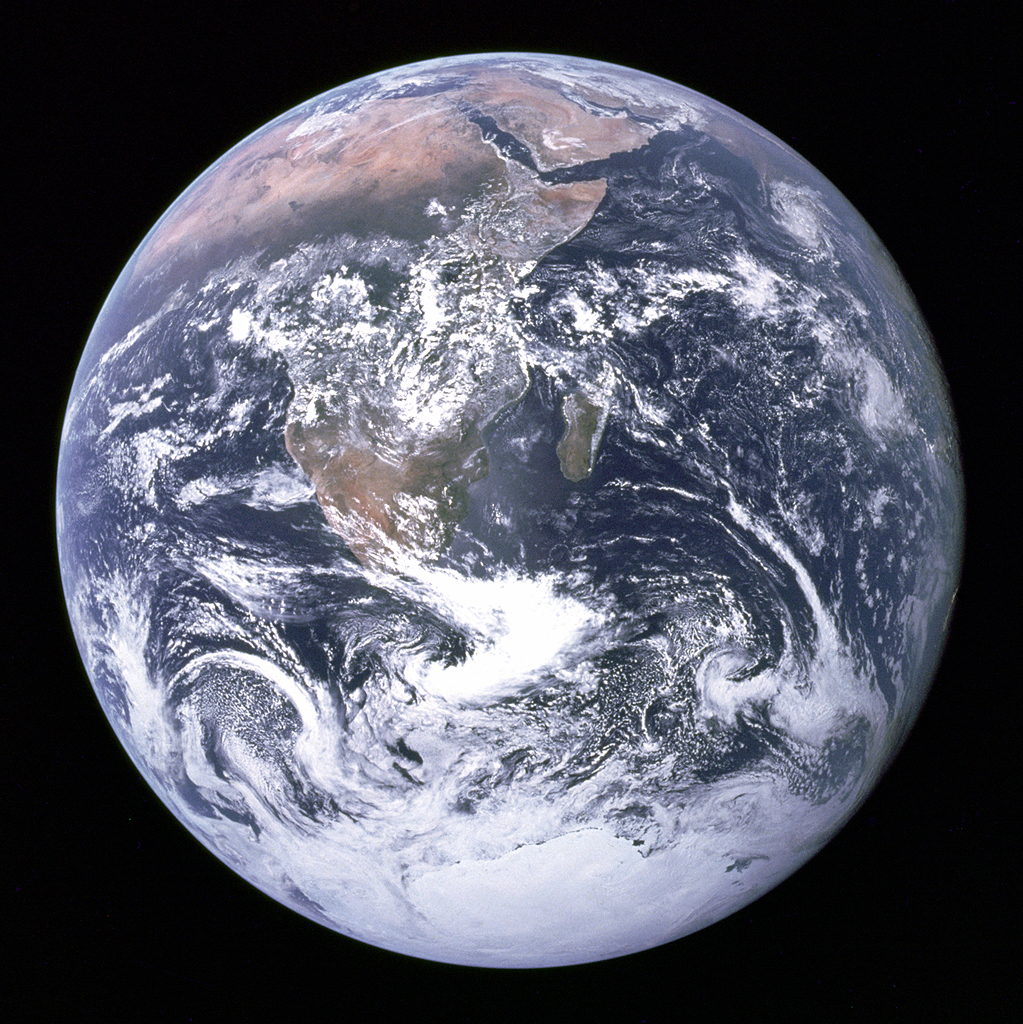
I imagine you can feel where this is leading.
If you’ve closed your eyes, please open them for a moment, take in the morning light, whether it is dim or bright. Cup your hands and grasp a bit of the light that surrounds you in the room.
How does what is in your hands (the light that you can’t see or feel now that it is “captured”) differ from the chair, sofa, wherever we find ourselves? While we are “matter”, what we’ve attempted to capture is “energy”. We think of each of these (matter and energy) as being fundamentally different, but we all know about that bright Jewish boy who figured out that it is “All One” and can be expressed in the equation E=mc2.
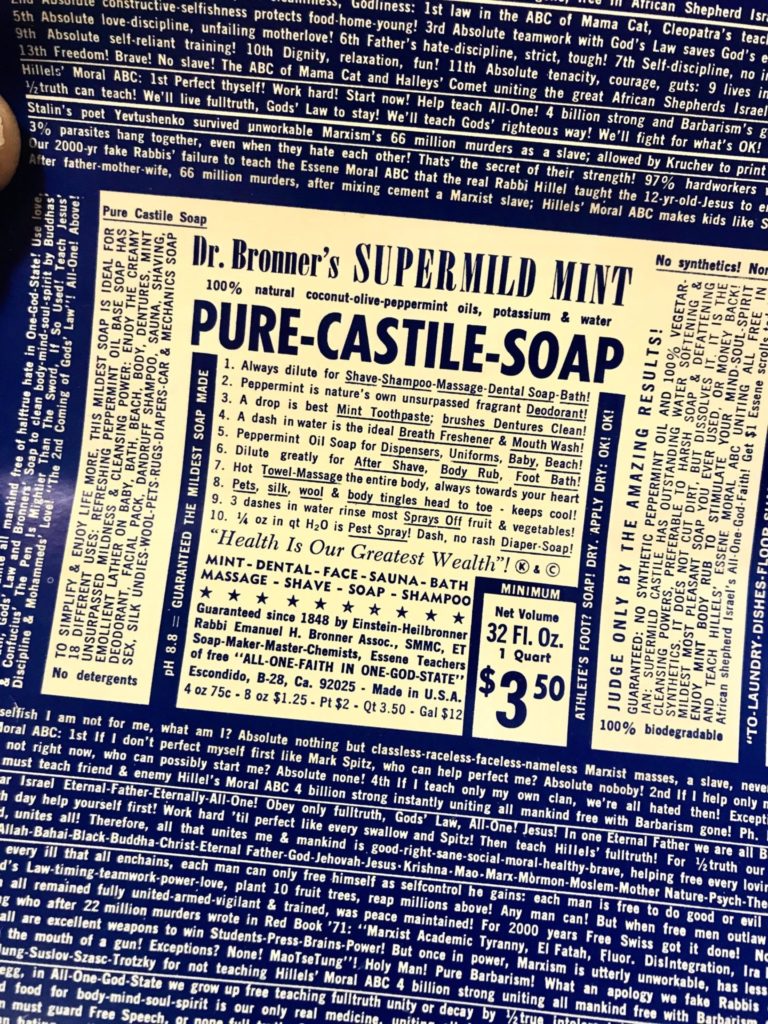
photo by Sean Flannagan used with permission
return to our first text, for a moment, the shema
Pay attention Israel, This Living/Breathing is our God, and this Living/Breathing is All One.
So, we are part of one pulsating — breathing, self-conscious — cosmos.
Feel free to close your eyes again.
One of the most important Jewish holidays (at least according to us rabbis) is Shavuot. It tells us that we — “finite, breathing, energized matter” — are part of the Infinite; an Infinite that communicates with us. I imagine that some in this meditation circle have difficulty with that concept. As we continue our count up to Shavuot, let’s explore the idea a bit and move on to our third text.
the third text
Because we, the finite have (self-)consciousness and the whole consists of at least the sum of its parts, the Infinite must have (self-)consciousness. The “Infinite” which is the “that which is greater than the sum of its parts” (that is all of us and our chairs, sofas, the rooms in which we find ourselves, our friends and family… everything we experience)… this “Infinite” is aware of us: “the finite”.
Come along with me.
This Infinite communicates with us: the finite. (Now, that may be a leap of logic, but, the ability to communicate is built into the finite, and, therefore part of the Infinite. When part of our body experiences pleasantness or discomfort does it not communicate that pleasure or pain to us?)
The “fact” that the Infinite communicates with the finite, indicates that the Infinite “cares” about the finite. (That’s one step of logic beyond the preceding statement, but, once again, “caring” is built into the finite, and, therefore part of the Infinite. And, communication is a core aspect of caring. The “act” of communicating is an “act” of caring.)
In religious language, we call this communication “revelation” and we celebrate its reality in the upcoming holiday of Shavuot.
What gets “communicated”? Traditionally we are told that Torah is revealed on Shavuot, but how much of Torah? This was discussed in detail by the early rabbis who kept narrowing down from all of Torah… to the Ten Commandments… and further. How much needs to be communicated or revealed. Actually, according to R. Menachem Mendel of Rymanov very little is necessary; only the aleph א, the first letter of the first word of the first of the Ten Commandments, which says “אָנֹכִי” (as in “I am”) and is essentially the same as the breath that Moses experienced at the burning bush. The “I‑Am”; because once God makes the divine presence is known, once that aleph א is “heard” (experienced), all else follows as the day follows the night.
counting the omer
We are ready to count the Omer:
בָּרוּךְ אַתָּה יְיָ אֱלֹהֵֽינוּ מֶֽלֶךְ הָעוֹלָם אֲשֶׁר קִדְּשָֽׁנוּ בְּמִצְוֺתָיו וְצִוָּֽנוּ עַל סְפִירַת הָעֹֽמֶר׃
Blessed are You, Sovereign of all space and time, who directs us to Count the Omer.
Today is the 42nd day of counting the Omer which is 6 weeks of the Omer
מוֹדֶה אֲנִי לְפָנֶֽיךָ.
Thank you God for the Gift of this Day
our mantra(s) for this morning
For our mantra this morning, we might feel ourselves as part of the breathing cosmos… I suggest two possibilities:
a:
Breathe God’s name: as you breathe in and out begin your empty lungs with the yod י; inhale on the heh ה; till you reach the vav ו; then exhale on the heh ה and continue…
or:
b:
Breathe in “praise” with הַלְלוּ then breathe it out again: הַלְלוּ.
follow-through
following the quiet time of meditation I sang Bonia Shur’s Kol Han’shamah, except much softer and slower, and only twice through.
buttons
A wide variety of Hebrew letter buttons were produced sometime during the 1940s through the 1950s. Since no documentation exists for them, it’s impossible to know what their purpose was (or exactly when they were made). Dating is based on their size, style, and other details. It appears that these may have been produced as awards for religious school, either attendance or achievement.
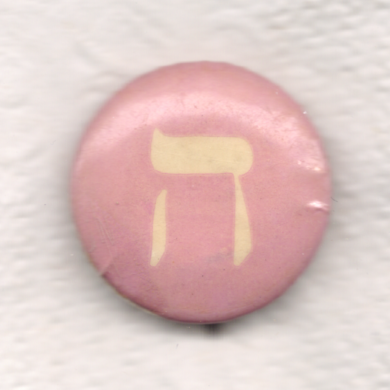
| Date: | 1940s — 1950s |
| Size: | 2.2 |
| Pin Form: | straight |
| Print Method: | celluloid |
| Text | ה |
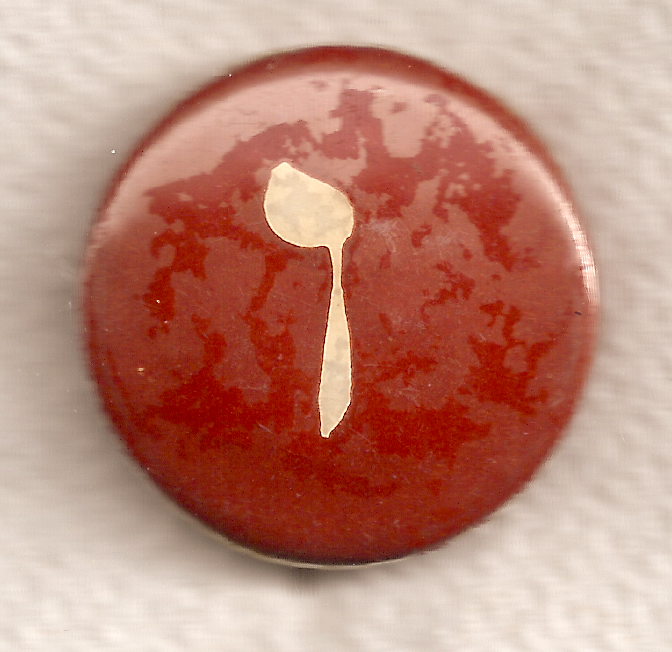
| Date: | 1940s — 1950s |
| Size: | 2.22 |
| Pin Form: | straight |
| Print Method: | celluloid |
| Text | ו |
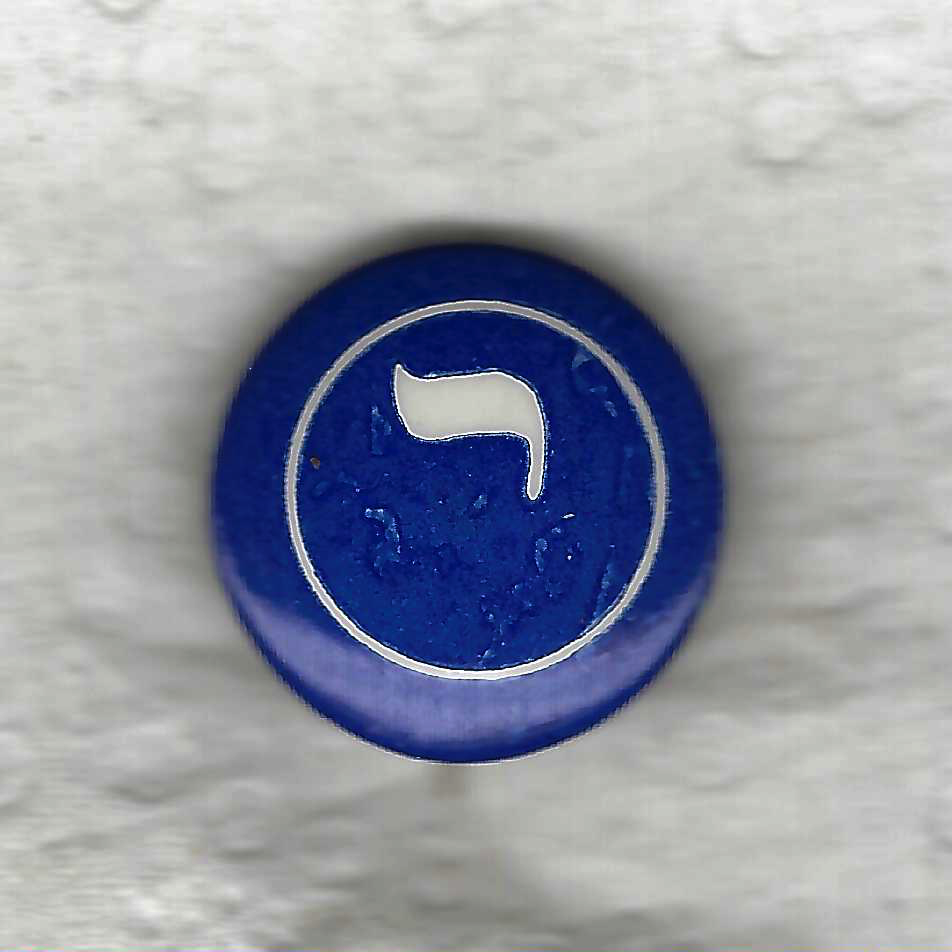
| Date: | 1940s — 1950s |
| Size: | 2.4 |
| Pin Form: | straight |
| Print Method: | celluloid |
| Text | י |
This button, on the other hand, is one of a set of 22, representing each of the 22 letters of the Hebrew alphabet. They were sold by the Union of Orthodox Congregations (now known as the Orthodox Union… after its Kashrut symbol, the OU (it seems that HTML does not support this abbreviation as a character)) to raise money for the writing of a Torah scroll during the early 1980s. When you bought a letter you received a button. You could buy as many letters as you wanted. I just bought each of the buttons. I don’t remember how much I paid.
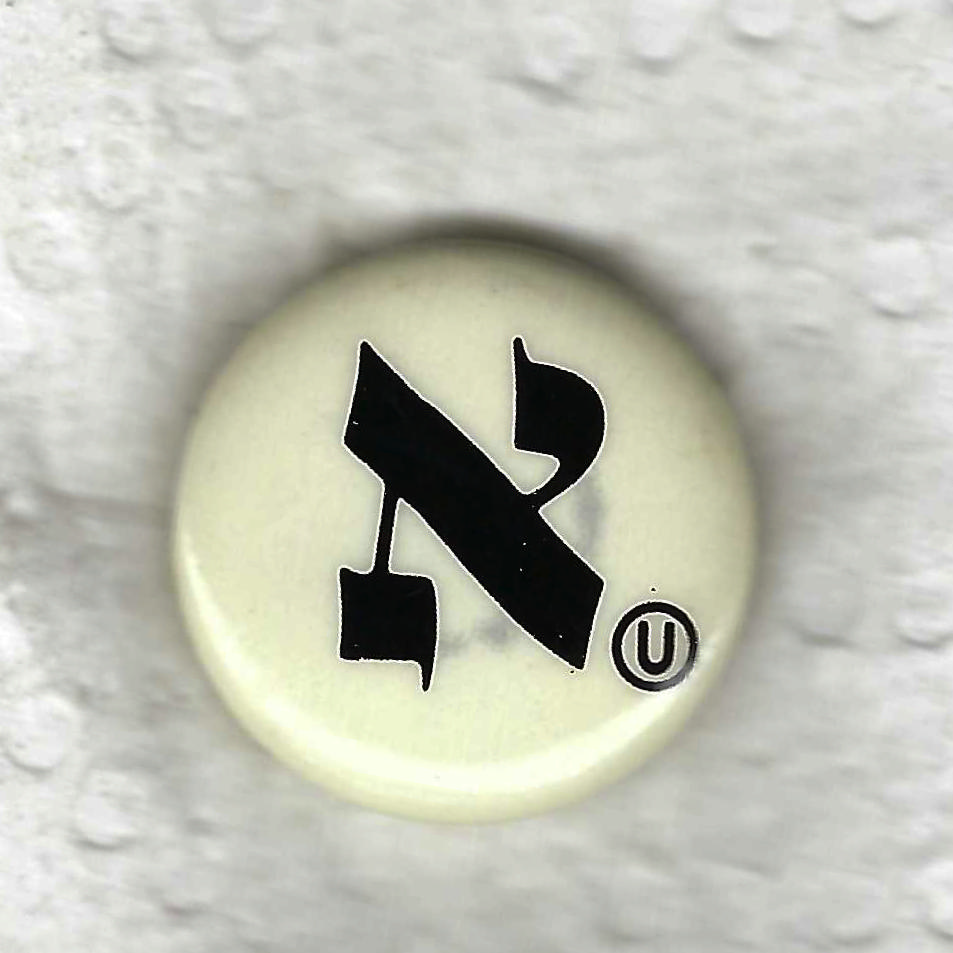
| Date: | early 1980s |
| Size: | 2.5 |
| Pin Form: | straight clasp |
| Print Method: | celluloid |
| Text | א |
your lapel buttons
Many people have lapel buttons. They may be attached to a favorite hat or jacket you no longer wear or poked into a cork-board on your wall. If you have any lying around that you do not feel emotionally attached to, please let me know. I preserve these for the Jewish people. At some point they will all go to an appropriate museum. You can see all the buttons shared to date.

